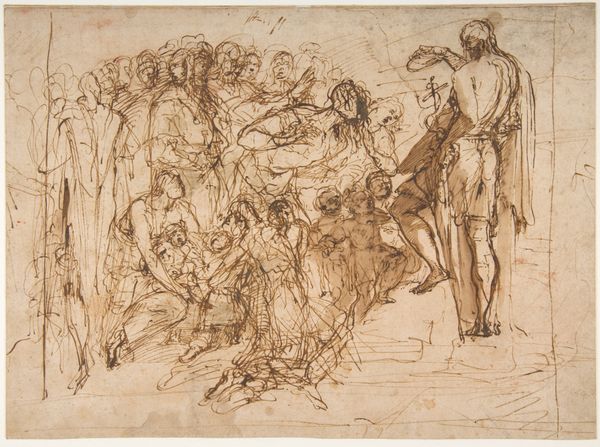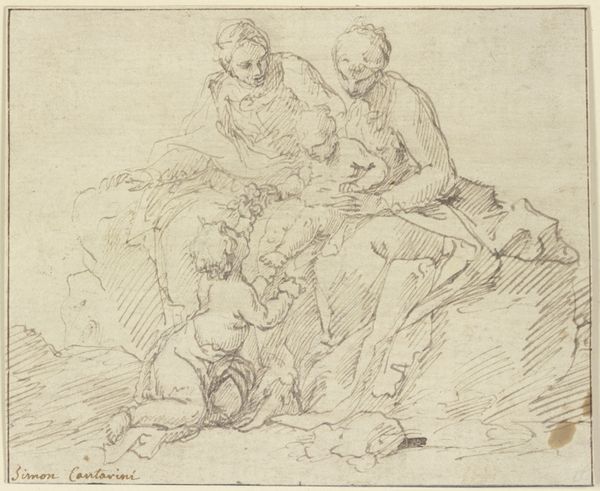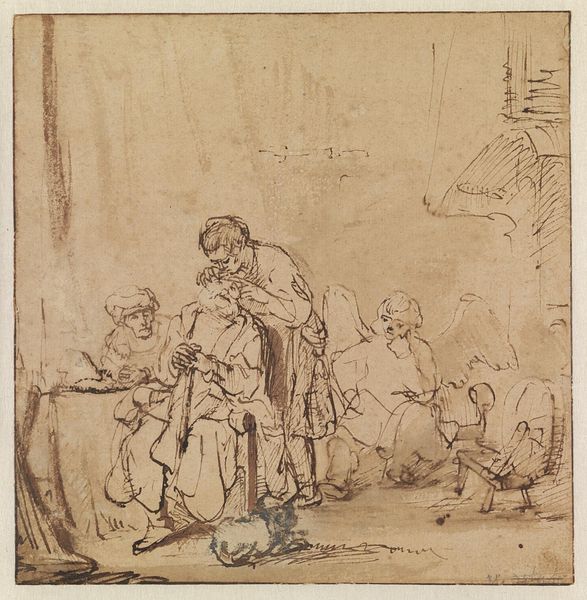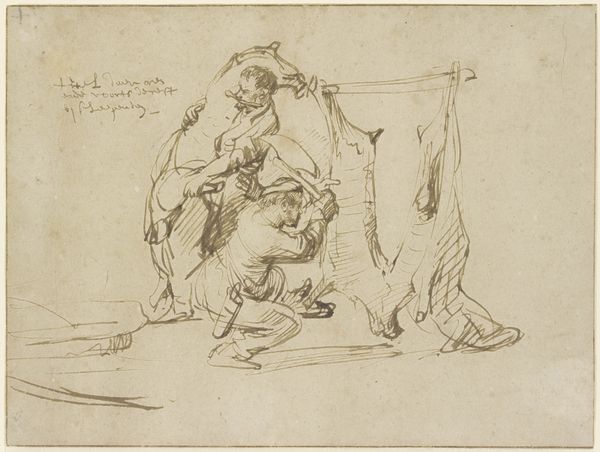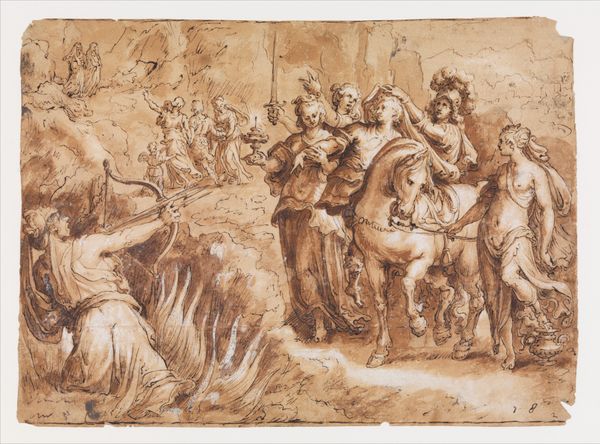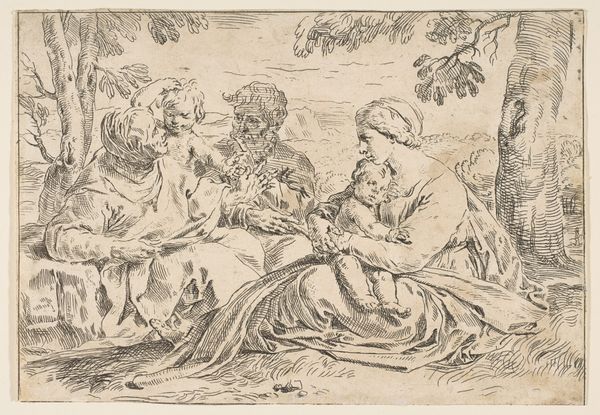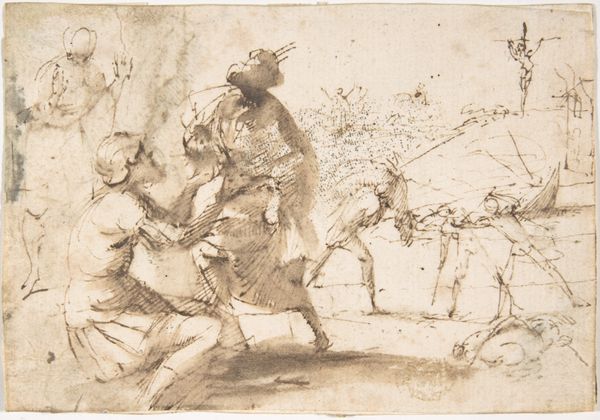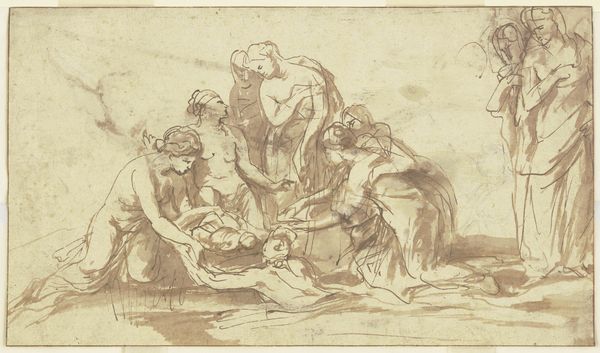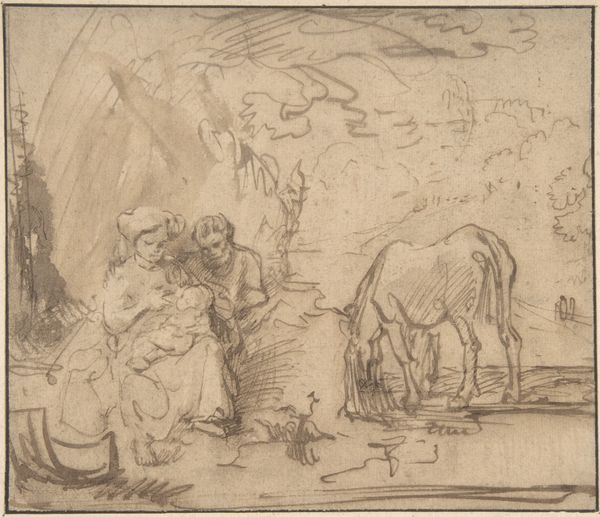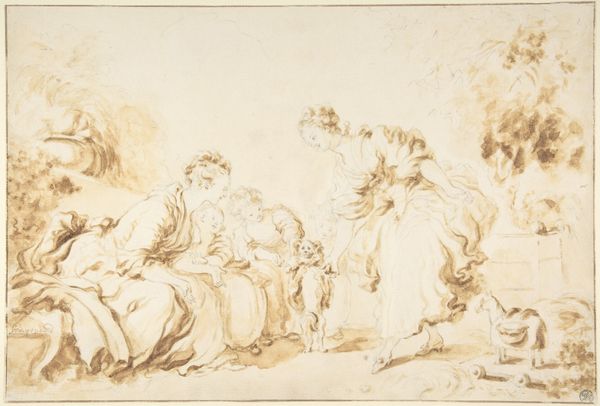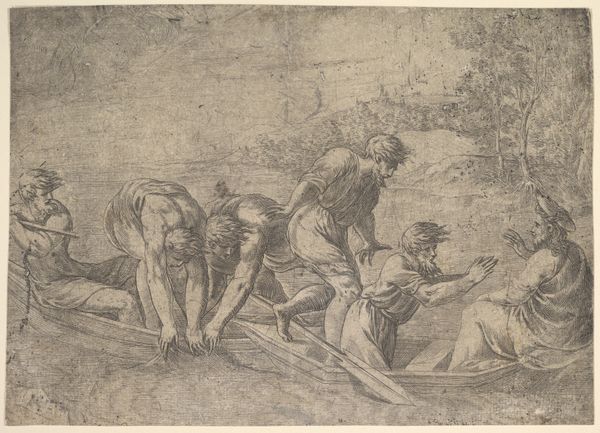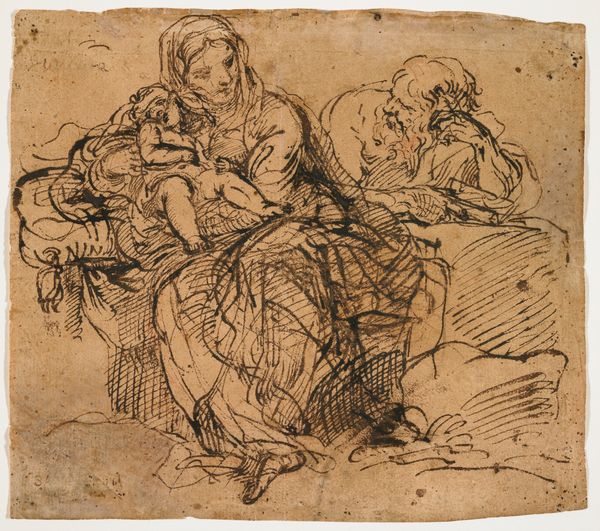
Study of Animals and Figures 1609 - 1664
0:00
0:00
drawing, paper, ink, charcoal
#
drawing
#
baroque
#
ink painting
#
animal
#
human-figures
#
charcoal drawing
#
figuration
#
possibly oil pastel
#
paper
#
ink
#
genre-painting
#
charcoal
Dimensions: 8-1/16 x 11-9/16 in. (20.4 x 29.3 cm)
Copyright: Public Domain
Curator: Good morning, and welcome. Before us is "Study of Animals and Figures," a striking work on paper executed in ink and charcoal by Giovanni Benedetto Castiglione, sometimes called Il Grechetto. It's estimated to have been created sometime between 1609 and 1664. Editor: Well, my initial impression is that it feels almost dreamlike. The lines are so loose, so suggestive rather than definitive. It's a collection of half-formed thoughts and images floating on the page. Curator: The fluidity is certainly key. Castiglione was quite innovative in his printmaking, particularly with monotype, and we see some of that same experimental spirit here. He's clearly focused less on polished representation and more on capturing fleeting impressions and dynamic poses. What kind of history might have prompted him to be inspired like that? Editor: Consider the era. This drawing comes from the Baroque period, marked by dramatic contrasts, heightened emotion, and a loosening of the stricter conventions of the Renaissance. Look at how the pastoral genre painting gained a certain amount of traction! These were often scenes with musicians, shepherds and their flock in gentle surroundings. But also reflect that religious and political upheaval shaped Baroque art, influencing both its subject matter and style. Artists became increasingly preoccupied with the transient nature of life. Curator: You are so right; I am struck by the contrast in rendering – the animal's faces feel fully realized and rich with expression. Consider how different that is from the ethereality of the figures. Perhaps he's making a subtle comment on the value of simplicity and an appreciation for nature? Or are these pastoral figures perhaps only background, merely supporting the visual complexity afforded by those details on the central goat? Editor: Well, it's hard to say definitively without knowing his specific intent. But it is important to note that artworks always exist within the contexts of politics and religion – how would the common folk feel looking at scenes with such stark imagery of animals and the lack of idealization or romanticization when humanized? He's likely provoking more thoughts and conversations for his target demographic than it would initially appear. Curator: Absolutely, there’s always an interaction of technique and content, just as there is form and context. He's certainly a masterful draughtsman. The variety in his mark-making is incredibly compelling – from the broad washes of ink to the finer, more deliberate lines of charcoal. Editor: Precisely! Art opens a window to the past. We interpret the image using the context that may or may not fully describe an image. What the history tells us for sure, is the dynamism, energy, and skillful ambiguity make "Study of Animals and Figures" a truly intriguing piece.
Comments
No comments
Be the first to comment and join the conversation on the ultimate creative platform.
